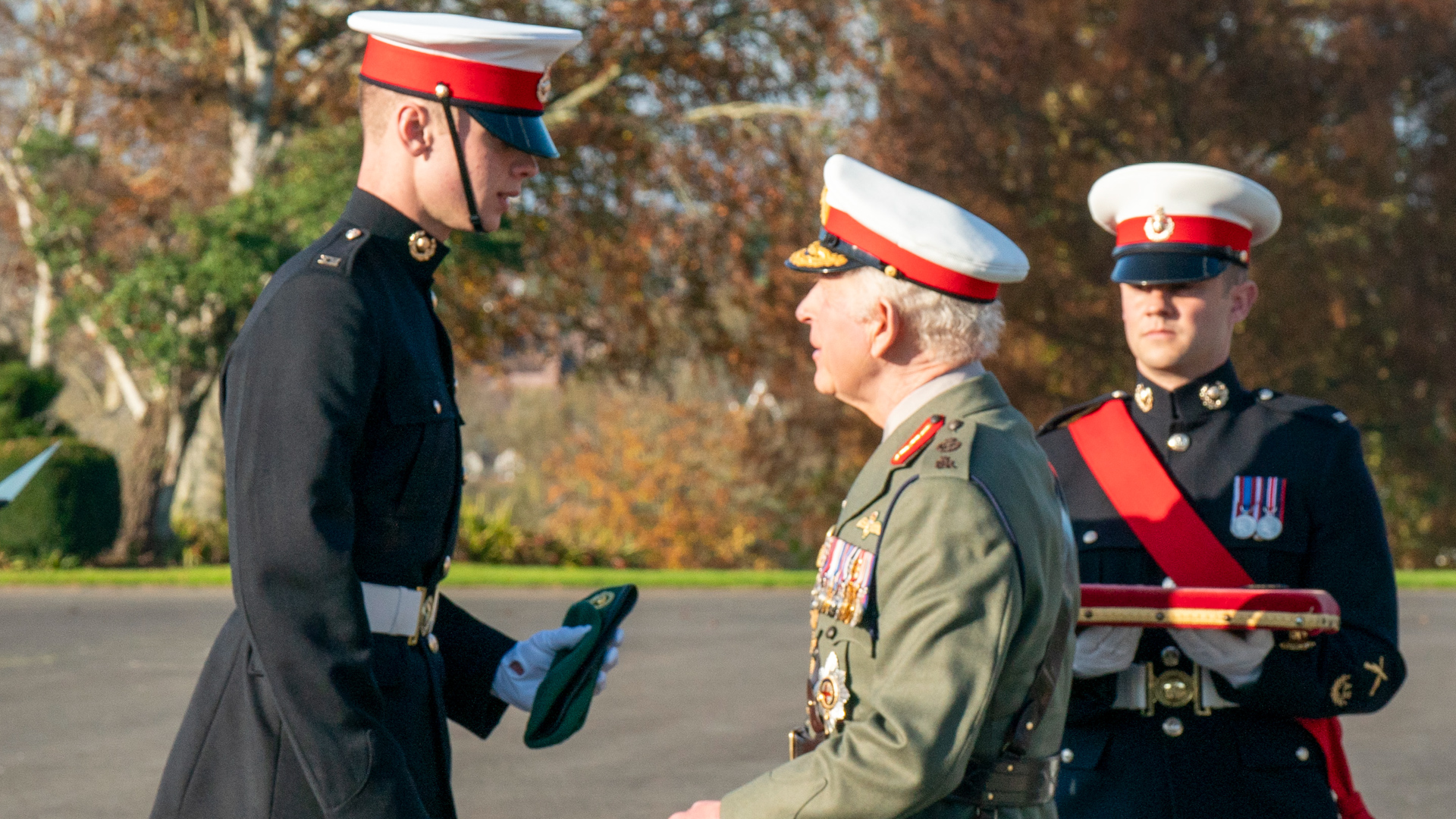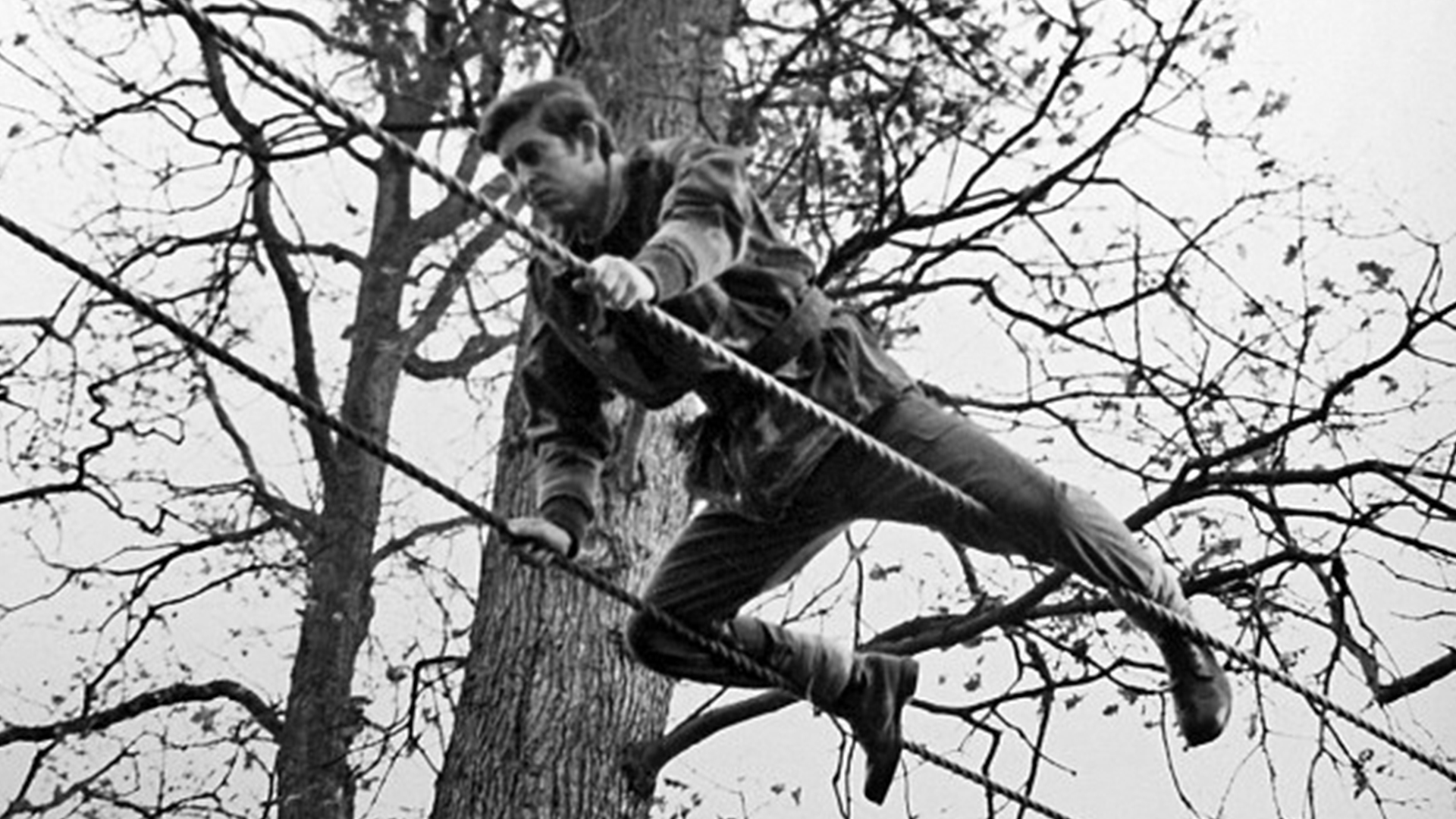King presents Royal Marines Commando with King's Badge for first time since 1939
King Charles has presented the King's Badge to the best Royal Marine to complete the Commando course – the first time it had been awarded by a monarch since 1939.
The King, as Captain General Royal Marines, visited the Commando Training Centre Royal Marines at Lympstone in Devon, where he saw 28 recruits from 362 Troop pass out.
He handed the badge to Marine Osian Stephens - the best all-round member of the King's Squad on completion of their Commando training.
The King is the ceremonial head of the Royal Marines, having assumed the role previously held by the late Duke of Edinburgh in October 2022.
The King's Badge dates back to 1918 when Charles's great grandfather, King George V, designated the senior training squad should be known as the King's Squad and the best all-round recruit be awarded the badge.
When Charles presented the King's Badge to Mne Stephens it marked the first time a serving monarch had presented the badge since George VI made the award in 1939.
The Royal Marines Historical Society explains how the badge, which consists of the Cypher of King George V (GvR) within a laurel wreath, is worn at the top of the left sleeve.
It is worn throughout the awardee's service and in all orders of dress, no matter what rank they later attain.

King's Badge-winner Mne Stephens, from North Wales, was just three weeks away from passing out last year when he picked up a serious injury.
After 10 months recuperating, he resumed his training this autumn and completed his final five weeks with aplomb to earn the badge.
"This moment will stay with me forever," said the 20-year-old.
"I know the last time a king presented the King’s Badge was back in 1939. It's quite daunting to think that I will be only the second Royal Marine to enjoy that honour."
The King's Badge was well earned, as Commando training is intense and can often result in injury.
"Definitely the hardest part of my training was when I was injured. [It was] a real shock to pick up a leg injury after doing so well for so long," he explained.
"But with determination I took the knock, got back up again and got myself back to where I wanted to be."
Another Commando to receive personal recognition from the King was 20-year-old Marine Joseph Ryan from Merseyside.
Like Mne Stephens, he also overcame a lengthy injury picked up late in training and spent five months recuperating and rehabilitating.
Mne Ryan received the Commando Medal for epitomising the Commando spirit and ethos - and was presented with his green beret by Charles.

Following the parade, King Charles moved to the Tarzan Assault Course to observe recruits completing one of the four gruelling Commando tests which qualify them to wear the green beret.
He later met training team instructors, Royal Marines returning from operations and those who had recently been involved in training Ukrainian forces.
The Commando Training Centre is the primary training centre for the Royal Marines.
On average, 1,300 recruits, 2,000 potential recruits and 400 potential officers attend training courses every year.
In addition, the Training Wings run upwards of 320 courses a year for around 2,000 students.
King Charles is no stranger to Lympstone.
During his time as a Royal Navy helicopter pilot in 1974, while serving with 845 Naval Air Squadron and on board HMS Hermes, His Majesty undertook Commando training with the Royal Marines at CTCRM.










